In writing a screenplay, with every character, you create them and take them on a journey. But how do you get to that point? How do you know who your character is and where to take them? This is the essence of character development.
Furthermore, when you create a screenplay, you’re not only creating the lead characters, but you’re also responsible for creating supporting characters, as well as minor characters. And if you’re writing for TV, you potentially will need new characters in each episode. And for comedy vs drama, for example, your character needs will be vastly different.
So what is key to creating compelling characters? Whether you’re creating your lead characters, or supporting characters, or even minor characters, in this guide we’ll demonstrate the path to good character development.
In this article, we’ll cover topics such as:
- The 10 Steps of Good Character Development.
- What is Character Development?
- How to Create Three Dimensional Characters.
- Using and Losing Stereotypes.
- How to Build Character Arcs.
- How Do You Write a Character Introduction?
- Writing Good Character Dialogue.
Before we get started, let’s get some definitions out of the way.
First off, What is Character Development?
Character Development is the process of creating your characters and understanding their relevancy to your story.
You must understand their purpose in the story. You must understand what qualities and characteristics need to be included, or at least thought about, as you write the dialogue, and how your character will relate to the other characters.
These are the three types of characters:
Lead Characters:
- Will appear in nearly every scene
- Will drive the plot
- Need a complex backstory and three-dimensional personality
Supporting Characters
- Will either support or hinder the lead characters
- Will appear multiple times throughout the course of the story
- Should have a short backstory
Minor Characters
- Will only play a part in the story for a short time
- Will complete a quick task or have a short conversation with other characters
- Won’t have a backstory, as it isn’t necessary
- Should have at least one or two descriptors, if appropriate
The 10 Steps of Good Character Development

1. Recognize that Characters are Not ‘Real’ Human Beings
Now this may be a controversial statement. It may shock you, and frankly, rock the foundation from which you have created all of your characters in the past.
Writers are always told to make their characters as ‘realistic’ as possible, as it allows audiences to believe them and relate to them. Creating layers makes them more interesting, right? So why would you not want to strive for this?
Think of some of the most memorable characters in the history of film.
- Doc Brown in the BACK TO THE FUTURE trilogy
- Michael Carleone in THE GODFATHER trilogy
- Hannibal Lecter in THE SILENCE OF THE LAMBS
- Forest Gump in FOREST GUMP
- Jack Sparrow in PIRATES OF THE CARIBBEAN trilogy
- The Joker in THE DARK KNIGHT or JOKER
Were they ‘realistic’? They may have had real emotions, but you wouldn’t ever expect to run into these people in real life. And that’s what made them great ‘characters’.
Audiences like to see situations and people that they may never actually see in real life, but fit perfectly into the story world you have created. In fact, given the list above, many times the antihero, who lacks the normal optimism and moralism of a traditional protagonist, will be the most intriguing to the audience.
BUT… people also enjoy the reassurance that characters and their stories provide, because they can see people overcoming obstacles and succeeding. As they like to see themselves in the character, often you will need to give them ‘average’ people that they can relate to onscreen.
Give them a character flaw.
Making characters flawed can help your audience feel like they understand them, and could see themselves in the character. This may come in your supporting characters, who don’t need to be as extraordinary as the protagonist.
But in short: don’t get bogged down in the mundane details. Yes, by all means, make a three-dimensional character, but know what details of the character you need to develop and what you don’t.
2. Purpose + Inner Conflict in Character Development
The logical next step in character development is understanding your character’s purpose in the story.
- Why do they need to appear?
- What do they want to accomplish?
- Will they help/hurt the protagonist?
For lead characters, and sometimes even supporting characters, you will also need to establish what inner conflict they are personally facing, as this will drive their actions throughout the story.
Do they…
- Hold a grudge against another character, but don’t know how to proceed?
- Want to prove themselves worthy to another character, but don’t know how?
- Feel disillusioned with the world they find themself in, but don’t know where to go?
Think of Michael Carleone in THE GODFATHER series.
- He always swore he would never join the family business, but due to circumstances, finds himself forced into the violent and treacherous world of the Italian mob.
- This causes much internal conflict within himself, as he questions who he is and who he actually wants to be. But because of high stakes, he feels the need to fit into the mold that has been expected of him.
- This causes him to hold grudges against those who wrong him, and feel moments of disillusion as he struggles to place himself in this new world, as well as live up to his father’s expectations.
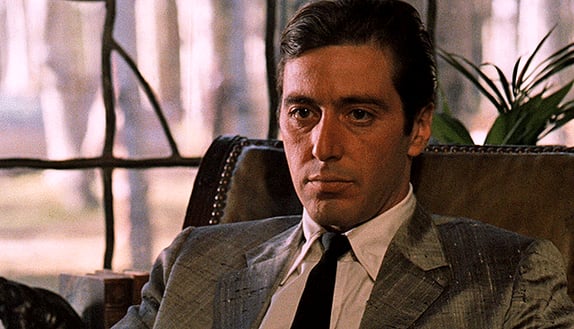
3. Archetype vs Stereotype in Character Development
As you begin to plot out the characters in your story, you need to be aware of archetypes, as well as stereotypes, and how to use them to your advantage.
An archetypal character is one defined by their plot function, ie what they are trying to achieve. For example, a protagonist is trying to achieve a goal, and the antagonist is trying to prevent them from achieving it.
Archetypes exist because each represents a part of our own minds, just turned into a character. Through them, we can learn what is the best way to go about solving a problem in our own lives.
Using characters from THE LORD OF THE RINGS trilogy, examples of major character archetypes include:
- The Hero (example: Frodo) – will play a major role in completing the goal, wants to succeed
- The Sidekick (example: Samwise) – average, comedic, provides support to hero, complements hero
- The Wise Elder (example: Gandalf) – eldest of the group, mystical/mysterious, provide guidance to hero
- The Adventurer (example: Aragorn) – confident, risktaker, leader
- The Warrior (example: Gimling) – masculine, barrels into situations, enjoys physical conflict
- The Artist (example: Legolas) – very creative and knowledgable, yet not wise
- The Eternal Child (example: Merry + Pippin) – innocent, childish, comedic
- The Shapeshifter (example: Gollum/Sméagol) – untrustworthy, duplicitous, often trusted before revealing true nature
- The Villain (example: Sauron) – wants Hero not to succeed, dishonest, violent/evil intentions
Stereotypes are to be avoided as a general rule.
But it’s also worth considering where they can help provide shortcuts to character development if needed. Stereotypes can be great for secondary characters (or even aspects of your lead characters).
Stereotypes are built upon established personalities that are common in a specific environment (ie the geek, the bully, etc.) They are widely adopted about specific types of individuals or certain ways of behaving intended to represent the group of those individuals or behaviors as a whole. This is usually set up in a story in order to be upended.
Think of all the teenage characters in THE BREAKFAST CLUB.
- They are literally defined within the movie by their stereotype: jock, princess, rebel, brain, and outcast.
- Many teenagers at the time of release (and even after) could relate to at least one of these characters or knew someone like one of the characters.
- But through the course of the movie, they prove that they are in fact more than the stereotypes that society had given them (and they had defined themselves by!).
4. Flat Character vs Three-Dimensional Character
Now that you understand your characters purpose and archetype/stereotype, you need to decide whether they actually need to be a ‘three-dimensional’ character.
As we talked about previously, you have probably always heard that every one of your characters needs to be ‘three-dimensional’. Everyone needs to complex, with different layers, and a multi-faceted personality. While many will argue that every character needs to be a three-dimensional character, remember that there is an argument, and a need, for flat characters.
Flat characters will typically:
- Have no or little internal conflict
- Not experience character development
- Lack a multi-faceted personality
Flat characters can be important because they contrast the three-dimensional, or ‘round’, characters in the story. Flat characters are static, meaning they remain the same and don’t go through changes or growth throughout the course of the story. So for our lead characters, who are very three-dimensional and will change, the audience will be even more intrigued and interested in their stories. They are our heroes that we want to follow.
Now that being said, you, of course, shouldn’t have any lead characters be flat characters. But you certainly can have some supporting and minor characters be ‘flat’. Especially in comedy, for example, flat characters are not only acceptable but may be preferred. You just need to understand that not all supporting characters or minor characters need to be fully developed, and that is OK.
But be aware that not all ‘static’ characters are flat characters. Think of the classic detective character Sherlock Holmes, who appeared in film series SHERLOCK HOLMES or the tv series SHERLOCK. Sherlock usually doesn’t go through much change but has an incredibly complex personality and background (although this certainly changed in Henry Cavil’s recent portrayal in ENOLA HOLMES).
5. In Character Development, Complement or Contrast Other Characters
It is important to understand how a particular character compares to other characters, and furthermore, what their motivational relationship is to them. Specifically, do they complement or contrast them?
For the lead character(s):
- Are they popular and do people usually agree with them and/or follow them?
- Are they the outcast, ostracised by the society/community in which they live?
- Or do they first get along with society, but then come to realize they need to break from those people?
For supporting characters:
- How do they relate to the protagonist?
- Do they help them along their journey? (ie complement them)
- Do they create obstacles for the protagonist? (ie contrast them)
For the lead characters, it is important to consider these questions early, as it will help you as the writer to create your supporting and minor characters, and base their qualities on how your lead characters would interact with them.
Specifically for supporting characters, if they are close to the protagonist, it helps for them to bring specific strengths, that the lead does not possess, to the table.
Think of the characters in the OCEAN’S ELEVEN trilogy, where they work as a team to complete a heist.
- Each of the characters brought their own perspectives and strengths, which contributes to reaching the team’s goal.
- This means they complement each other.
- But sometimes those differences cause conflict between them, adding all the more to the character dynamics.
And don’t just think in terms of traits but of perspective.
If the protagonist thinks in black and white, perhaps have a supporting character that helps them see the grey area. If the protagonist doesn’t usually follow the rules, have a supporting character who fears breaking laws and has a strong moral compass. It gets boring if there is no conflict of views within the main characters.
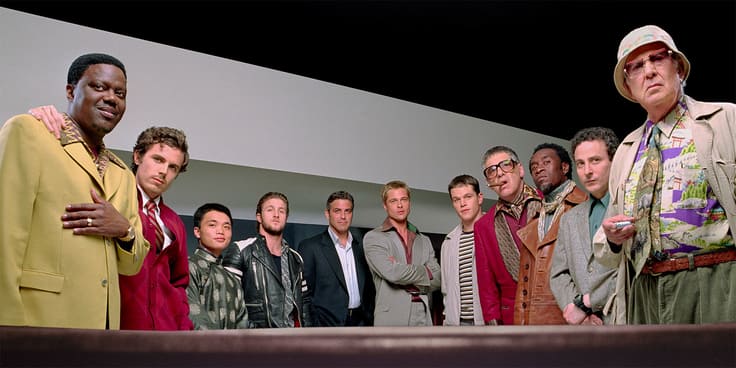
6. Character Arcs
One of the most important aspects of character development is figuring out the character arc. This is the inner journey of the character, and mapping out how the character will change from one person into another type of person by the conclusion of the film or series.
While your lead character should always have a character arc, remember that supporting characters and even minor characters can have arcs.
There are three common starting points for lead character arcs:
- A Protagonist starts out living an average life, but is thrown into a fantastical situation
- The Protagonist starts out with everything, but then loses everything
- The Protagonist starts out with everything and is average, but is thrown into a fantastical situation and loses everything
1. Average => Fantastical Life
Think of FORREST GUMP. Some might even call Forrest below average, but he ends up influencing major events in American history. HARRY POTTER also falls into this category. He starts out a ‘muggle’ living in a cupboard, only to find out he is a wizard, and a famous wizard at that, and is thrown into the wizarding world.
2. Has Everything => Loses Everything
Think of THE PURSUIT OF HAPPYNESS. He loses his job, and then he loses his wife, and then nearly loses his son due to poverty. But, of course, he eventually does succeed and overcome such challenges!
Often movies that take place during war times such as GONE WITH THE WIND and COLD MOUNTAIN will also take their characters on this journey. Even disaster movies like TITANIC, GRAVITY, and THE PERFECT STORM will fall into this category.
3. Average Person Who Has Everything => Thrown Into Fantastical Situation and Lose Everything
Or you have Michael Corleone from THE GODFATHER, who actually overlaps both of these. Michael very much wants to live a normal life, but is instead thrown into the world of the Italian mob. He also begins to lose all the stability and morality that he had believed would lead his life, essentially leading him to lose everything he held to be important.
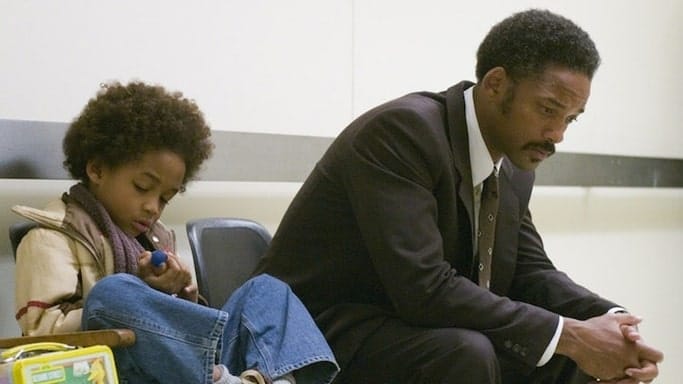
7. Diversity As a Part of Character Development
This is an important step now more than ever. The world is a diverse place, so to show different people from different backgrounds is important and allows for a wide variety of audiences to see themselves represented.
Whether that be in…
- race
- gender
- sexual orientation
- disability
- political beliefs / religious beliefs
Challenge yourself every step of the way as to who these characters are. Think consciously about who they are and the implications that will or won’t have on the story. Truly interrogate the identity of your characters and the wider context of their situations and the world around them.
If writing characters who are of a different ethnicity, sexuality or gender to yourself, this is when making them fully developed and rounded characters is essential. Research and consultation are crucial to counteracting any inherent biases. Doing justice to the characters at hand means giving them depth and nuance and not falling back on assumptions or perceptions.
8. Physical Profile + Social Background
Now that you’ve done all the background work, you get to the fun part. The specific physical qualities that will set your character apart and make them unique.
But you may be saying to yourself “While I was answering the other questions in the other steps, I already thought through many of these!” That’s fine and completely understandable. You may have known this even before you began reading this article.
But it is important to consider the preceding questions before nailing down these qualities, as you can be more strategic in your approach. Yes, you can just create characters. But if your characters’ personalities and qualities work in tandem with your story needs, it will make them even better.
Specifically for supporting characters, you won’t be able to include all these details in your script. But be specific with a few of these qualities textually, and know the rest of them as you write.
Physical Profile
- Name
- Age
- Physical Qualities
- Costume/Clothing
- Movement
- Voice
Example
Think of Joaquin Phoenix’s appearance in THE JOKER or Heath Ledger in THE DARK KNIGHT.
- A tacky bright colored suit. Unevenly applied white face paint. A bright green tinge to their combed back hair, which is greasy and untamed.
- But also think of how each actor differentiated them with the way they walked, moved their head or expressed themselves. Small changes made a big difference.
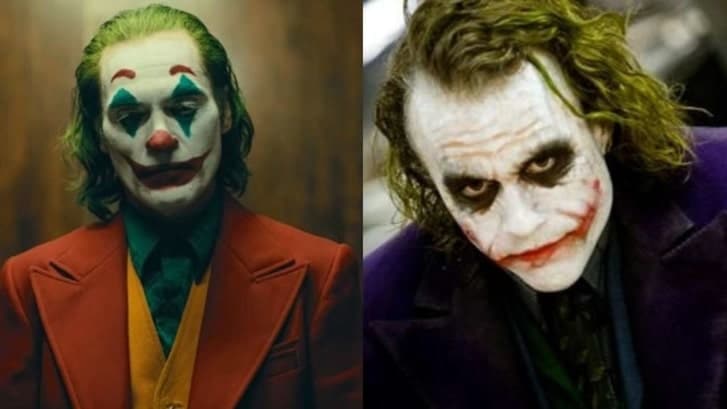
Social Profile
This is where you figure out your character’s background and history, as that will influence how they speak, how they act, and how they interact with other characters.
- Educational background – High School, College, PhD, etc.
- Economic background – wealthy, middle class, working class, poverty, etc.
- Family – parents, siblings, extended family, etc.
- Romantic Relationships – spouse, girlfriend/boyfriend, affairs, etc.
- Employment – occupation, company, a good employee or bad employee
- Work History – employed/unemployed, linear career path, contracted freelance work, etc.
- Children – sons, daughter, step-children, adopted children, etc.
A character’s background or backstory is a comprehensive overview of a character’s history that extends beyond the story in which the character appears.
Example
Think of Albus Dumbledore from the HARRY POTTER book series.
- Although it wasn’t included in the original film series, and has begun to come about due to the new FANTASTIC BEASTS film trilogy, his backstory was incredibly developed for not being the lead character.
- He had his own nemesis, his own secrets, and his own family history.
Sometimes it can be incredibly rewarding to have a supporting character with this complex of a backstory.
9. Character Introductions
Now you have a solid character. But how do you put them into your screenplay?
The character introduction is just as important a stage to character development as the rest. This will be the moment that audiences will forever associate with your character, as it was the first time they were exposed to them.
There are three steps to introducing your character:
- Establish their Reputation
- First Appearance
- First Dialogue
1. Establish their Reputation
The first step is establishing the reputation of your character. And it actually comes prior to your character coming onto the scene.
This is usually best for the antagonist or supporting characters, as you will want to introduce your lead character as soon as possible.
It can be effective to foreshadow the entrance of the character by hearing other characters speak of their reputation. Having differing opinions of them can throw the audience off guard, not sure of what the character will really be like. This will lead audiences to anticipate their appearance and enjoy the moment even more when it arrives.
2. First Appearance
Next, you have to decide how they will first appear. Consider the setting. Does it fit your character and where they would usually hang out? Or are you going to draw a stark contrast between your character and the setting? Will they be out of place, and will you use that irony to draw out their character traits? And what about their appearance. What are they wearing? What are they doing?
3. First Dialogue
Then you must choose the first few lines of dialogue for your character. These are some of the most important as it is the first time your audience will see your character (or if over the phone, at least hear them). How the actor delivers these first lines will also determine how the character will sound.
Example
For a great example of foreshadowing a character introduction and establishing their reputation, think of the introduction of Hannibal Lecter in THE SILENCE OF THE LAMBS.
- Clarice is first told about Hannibal by her boss Crawford at the FBI headquarters, who wishes for her to interview him.
- He explains that Hannibal has been refusing to cooperate in their interviews, and that Hannibal is a “psychiatrist” and well as an “artist.” It then cuts to Dr Chilton at the prison, who describes him as a “monster” and a “psychopath.”
- Just prior to leaving her, Chilton tells Clarice a story of how Hannibal disfigured nurse after he tricked them into allowing him out for a medical examination.
- But then… the cellblock attendant tells Clarice not to worry as “she will do just fine.”
- All of these factors make us not sure of what to expect of Hannibal.
10. Dialogue As a Part of Character Development
Your character development is not done once you’ve created a character profile and decided how they will enter the story. Their dialogue is actually further character development.
For screenwriters, a main focus has and always will be dialogue. Even if it is a minor character with only a few lines, it may be even more important to make those few words impactful and memorable. The actor will bring life to your lines, but it is important to provide them with great dialogue.
Here are four important elements to developing dialogue for your character:
- Purpose of the Line/Scene
- Voice of the Character
- Monologues
- Catchphrases
1. Purpose of the Line or Scene
With dialogue, it is important to always consider what purpose that line or that scene serves within the script. What is incredible about dialogue is that it is planned conversation, meaning it can be as witty and insightful as you want it to be. Also consider subtext, which is essentially what the text doesn’t directly say, but can be inferred by the audience.
2. Voice
Make sure to focus on your character’s specific voice, which can be influenced by location, time period, accents, etc. You must clearly hear their voice in your head as you write, so that the voice remains consistent and believable (but be ready for the actor to put their own spin on the character during filming!).
3. Monologue
The monologue is a great way to really allow a character to voice their inner thoughts and/or opinions. Whether it be feelings, plans, or anxieties, the character can have space to fully disclose these to their fellow characters or directly to the audience. This speech by the character can not only tell us a lot about themselves but also set the tone for that scene or the entire story.
4. Catchphrase
A catchphrase will be a short phrase or expression used by a specific character, that recurs in a similar form throughout the course of the script. This will be the phrase that audiences leave the theater reciting, imitating your character. But it is also important to your character as it makes clear to the audience what the character actually values.
For examples of a monologue and catchphrases, look at Jack Sparrow in the first film of PIRATES OF THE CARIBBEAN…
Monologue Example
For the monologue example, look at a monologue from the first honest conversation between Jack and Will Turner in the first film of the trilogy:
“Now as long as you’re just hanging there: pay attention. The only rules that really matter are these: what a man can do and what a man can’t do. For instance, you can accept the fact that your father was a pirate and a good man… or you can’t. But pirate is in your blood, boy, so you’ll have to square with that someday. And me, for example, I can let you drown… but I can’t bring this ship into Tortuga all by me onesies, savvy? So, can you sail under the command of a pirate… or can you not?”
– Jack Sparrow ‘Pirates of the Caribbean: Curse of the Black Pearl’
It clearly states both what Will is struggling with and must overcome, as well as what Jack needs from him, and what is at the basis of their relationship. Making it clear that Jack splits all decisions into “what a man can do, and what a man can’t do” also says a great deal about Jack’s character.
Catchphrase Examples
For catchphrases, throughout the first film, Jack is constantly reminding people of who he is, saying “I’m Captain Jack Sparrow” or is heard questioning “Why is all the rum gone?” He also has a scene where a woman slaps him across the face, where he jokes “I probably deserved that one”.
These three phrases exemplify his personality and desires.
- For one, he always wants to remind people that he is in fact a ‘famous’ pirate, and that he has an established reputation.
- For the second and third, these reiterate his comedic role in the film, and the fact that he values the pirate lifestyle, full of drinking rum and surrounding himself with beautiful ladies.
- Some of the catchphrases are recycled throughout the trilogy.
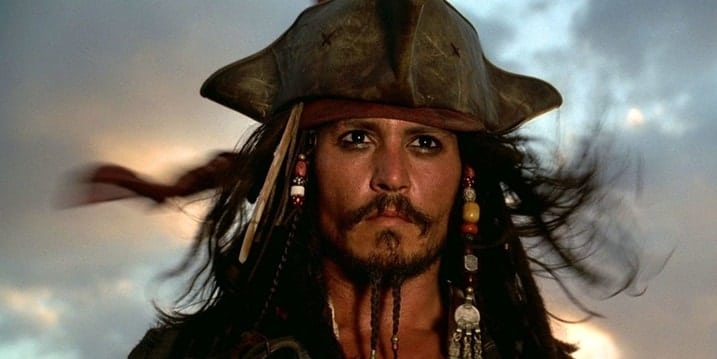
In Summary:
1 Recognize that characters are not ‘real’ human beings. Great characters aren’t always the most realistic but the most imaginative, complete and consistently intriguing.
2. Make sure your character’s purpose and driving conflict is well defined.
3. Be wary of how to utilise archetypes and stereotype but to not overly rely on them, particularly when it comes to your main characters.
4. Make sure that your three-dimensional characters and your flat characters are the right way around, your important characters well-rounded and deep, your flat characters and supporting characters efficiently defined in their purpose and function.
5. Complement or contrast other characters to your protagonist. Think carefully about how all your characters relate to each other, both in the reality of your story but in the construct of your screenplay too.
6. Nail the trajectory of character arcs so that they feel consistent and concrete.
7. Interrogate your characters’ identity and challenge your own potential biases and projections.
8. Be specific in how you imagine and relate your characters’ physical attributes and unique characteristics.
9. Make your character introductions are as impactful as possible. Don’t waste the biggest opportunity you’ll get to make an immediate impression on the audience.
10 Keep character dialogue consistent and meaningful. Be considered in how you assign dialogue to each character, making sure to not make all characters sound the same.
- What did you think of this article? Share It, Like It, and let us know your thoughts in the comments box further down…
- Struggling with a script or book? Story analysis is what we do, all day, every day… check out our range of script coverage services for writers & filmmakers.
This article was written by Katherine Sanderson and edited by IS Staff.
Get *ALL* our FREE Resources
Tackle the trickiest areas of screenwriting with our exclusive eBooks. Get all our FREE resources when you join 60,000 filmmakers on our mailing list!


This is an excellent article. However, one critique I must make the proper name of the character is “Gimli”, not “Gimling” from the Lord of the Rings.
An excellent detailed summery of how to develop characters. Very logical, step by step approach. A great find for beginning writers.
Fantasti article; just what I needed and all I needed!
I am pleased to subscribe.
Very informative and enjoyable. Thanks. I learned a lot.
Thanks!
Excellent
Thanks! Glad you enjoyed the article.
too much blah, blah, blah. 10 pages?